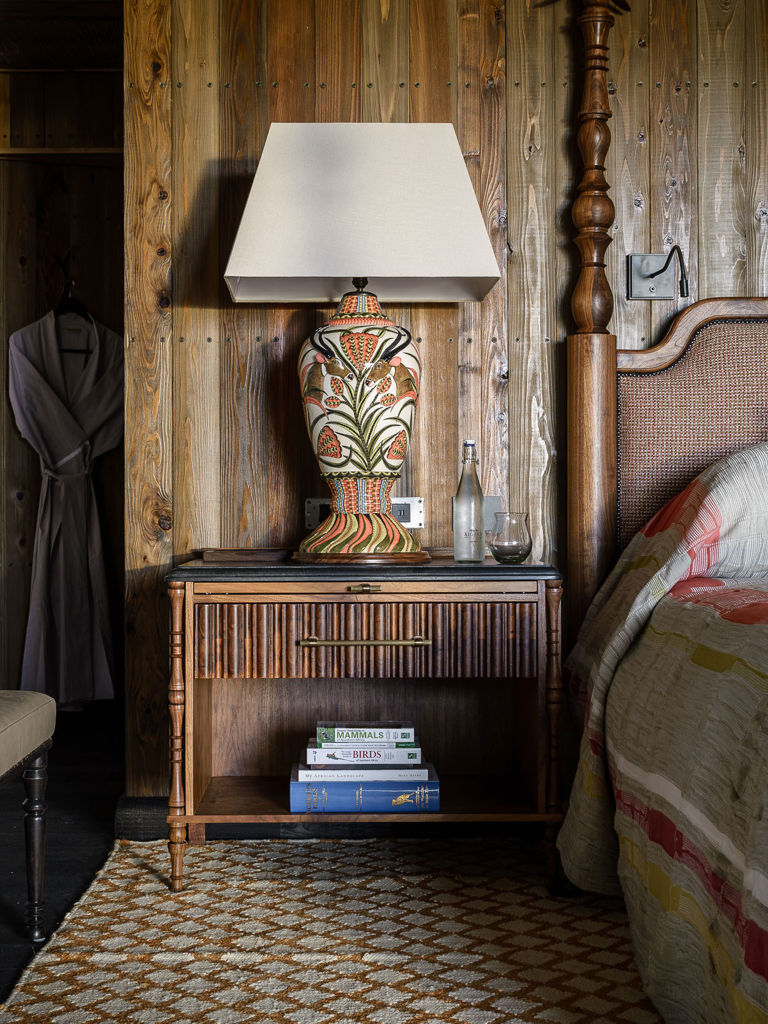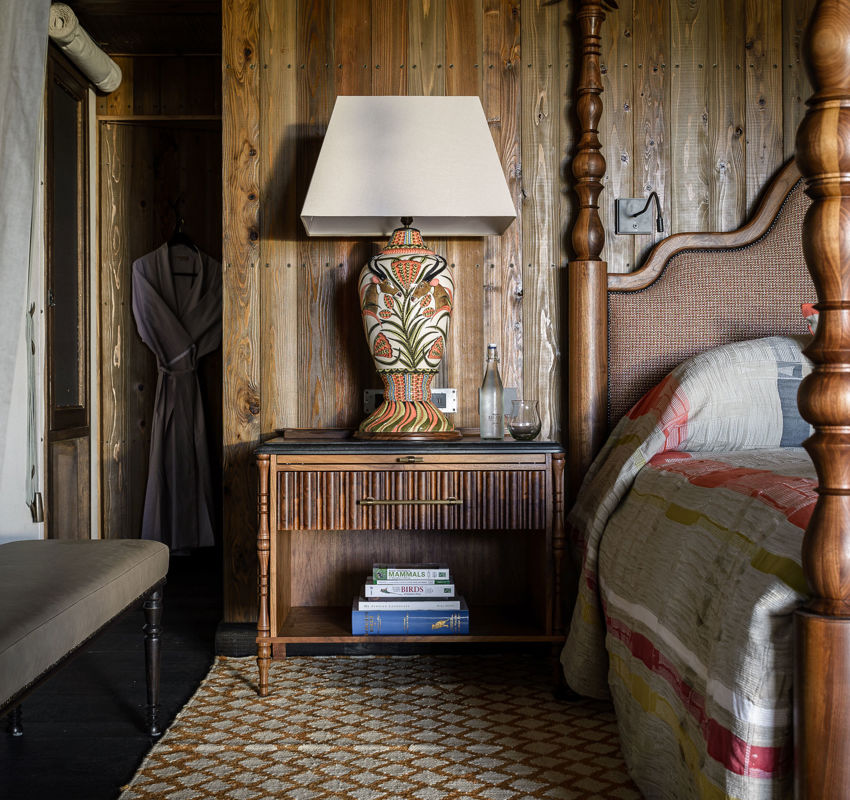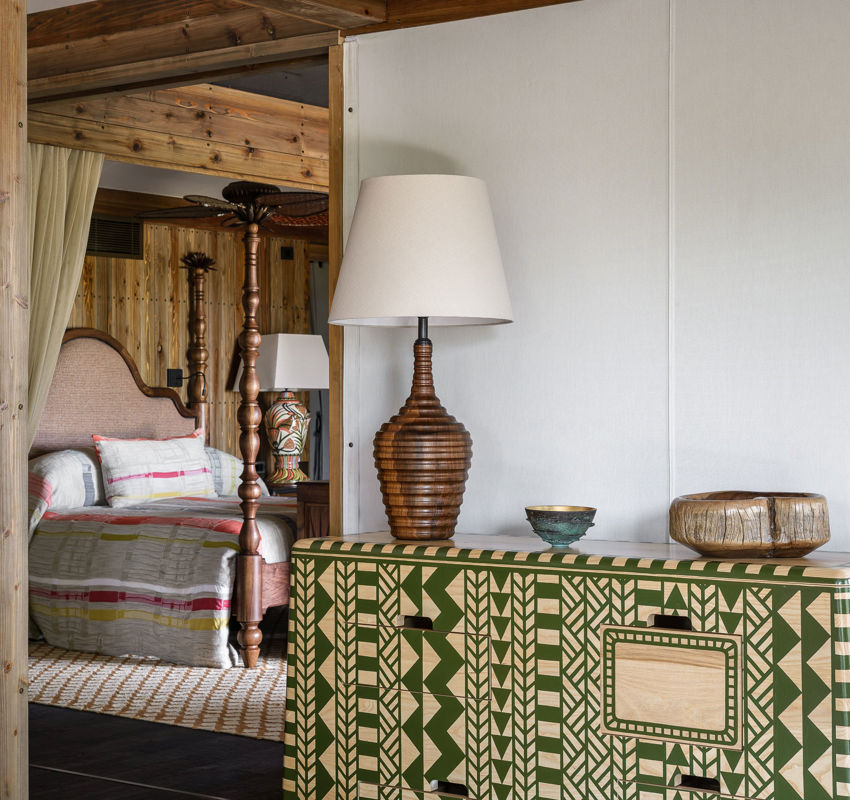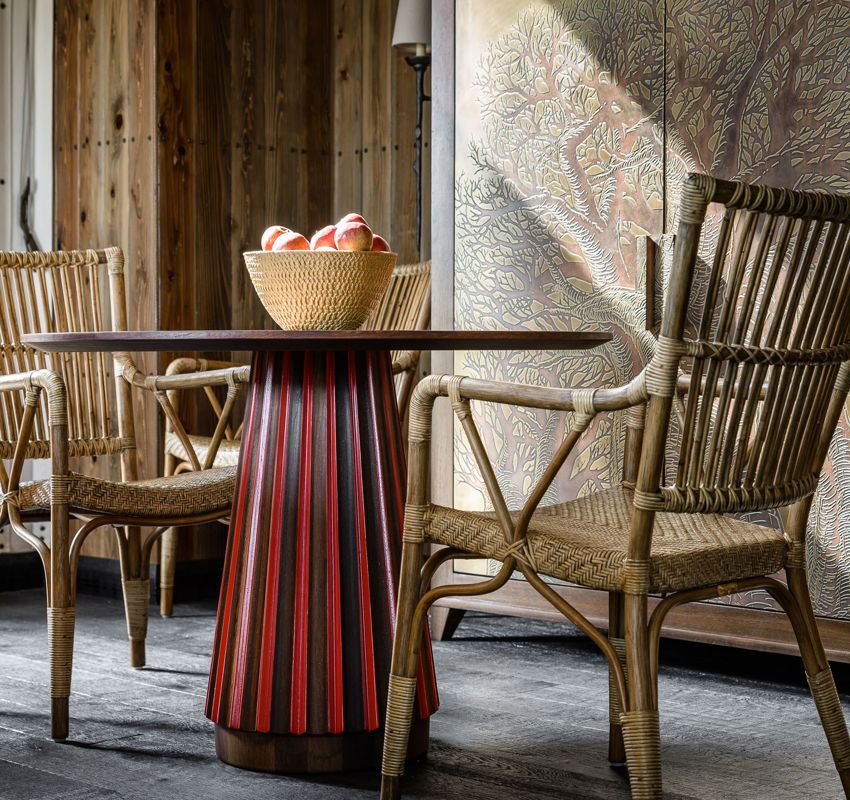THE BAOBAB SUITE
The baobab is a prehistoric species which predates mankind. Native to our African savannah, it is a symbol of life and positivity in a landscape where little else can thrive, and has adapted to its environment, absorbing and storing water in its vast trunk during the rainy season, and producing a nutrient-dense fruit in the dry. Known as “the tree of life”, the baobab is truly iconic - and its suite of the same name is suitably spectacular, with beautiful sculptures and cabinetry.




